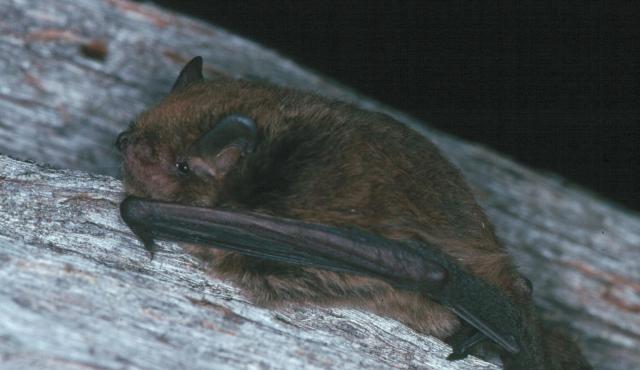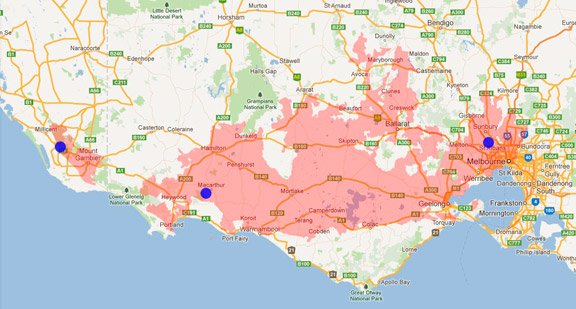A range of teacher professional learning programs will be developed to accompany the Biodiversity of the Western Volcanic Plains online outreach...

Large Forest Bat
Vespadelus darlingtoni
Roosts in tree hollows and buildings. Colonies of up to 60 may be found however smaller groups, mixed species groups and solitary males may also be found. Single young are born in November-December. Forages below and in the canopy even during mild winter nights when other species are hibernating.
| Details | Description |
| Type | Mammal |
| Group | Placental |
| Identifying Characteristics | |
| Distinctive Markings | The ears and wings are very dark. There is a black triangular patch on the lower lip. |
| Diet | Carnivore. Ants, flies, bugs, beetles, moths and spiders. |
| Habitat | Wet and dry sclerophyll forest, subalpine woodland, alpine moors, rainforest and coastal mallee. |
| Native Status | Native to Australia |
| Taxonomy | |
| Phylum | Chordata |
| Class | Mammalia |
| Order | Chiroptera |
| Family | Vespertilionidae |
| Genus | Vespadelus |
| Species | darlingtoni |

Distribution maps indicate current and historic locations where species have been sighted.
Source: Atlas of Living Australia
| Conservation Status | |
| DEPI Advisory List | Not listed |
| FFG Act | Not listed |
| EPBC Act | Not listed |
The conservation status of species is listed within Victoria and Australia.
The Department of Environment and Primary Industry (DEPI) Advisory List consists of non-statutory advisory lists of rare or threatened flora and fauna within Victoria.
The Flora and Fauna Guarantee Act 1988 (FFG Act) lists threatened species in Victoria. Under the Act, an Action Statement is produced for each listed species.
The Environment Protection and Biodiversity Conservation Act 1999 (EPBC Act) is the Australian Government’s key piece of environmental legislation, listing nationally threatened native species and ecological communities.



